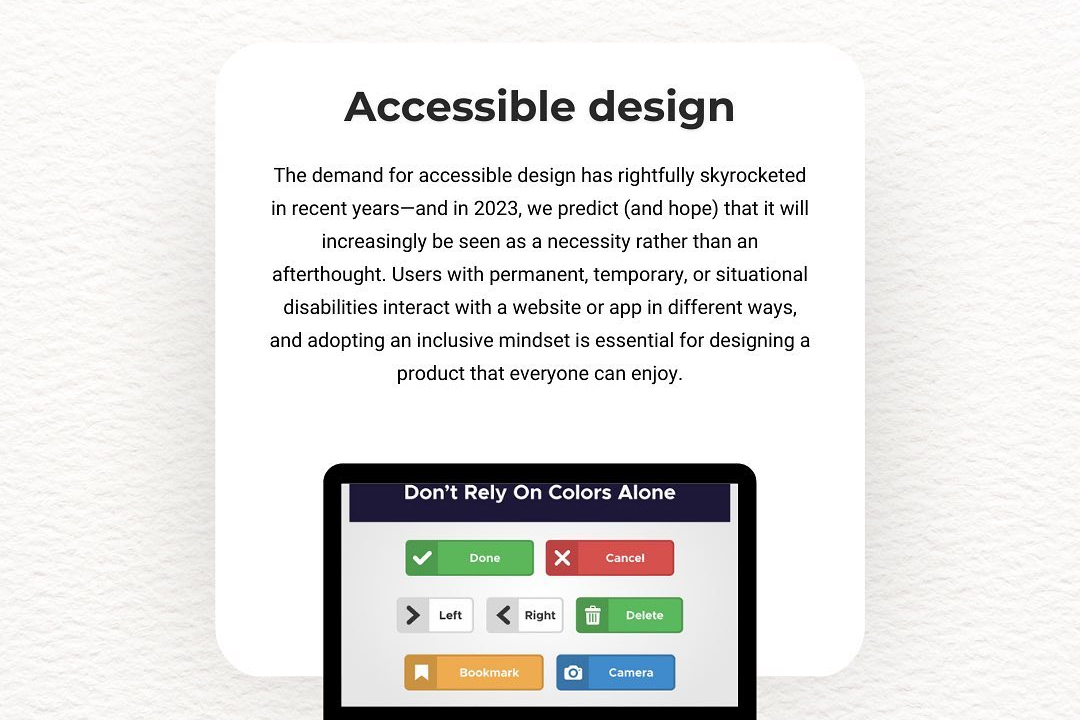Encapsulation In Php Example Program
Encapsulation in PHP is a core principle of object-oriented programming that involves bundling an ob
Encapsulation In Php Example Program
Encapsulation in PHP is a fundamental object-oriented programming concept that helps in safeguarding an object's data and maintains its integrity by restricting access to its internal state. By using access modifiers like private, protected, and public, key properties and methods can limit exposure and manipulation from outside the class. This ensures that the object can only be modified through defined methods, which implement necessary validation and business logic. For example, in a `BankAccount` class, encapsulating the `balance` property as private prevents external code from altering it directly, thereby protecting the account from invalid operations. As a result, encapsulation enhances security, promotes modularity, and makes the codebase easier to manage and maintain.
To Download Our Brochure: https://www.justacademy.co/download-brochure-for-free
Message us for more information: +91 9987184296
Encapsulation in PHP is a fundamental object oriented programming concept that helps in safeguarding an object's data and maintains its integrity by restricting access to its internal state. By using access modifiers like private, protected, and public, key properties and methods can limit exposure and manipulation from outside the class. This ensures that the object can only be modified through defined methods, which implement necessary validation and business logic. For example, in a `BankAccount` class, encapsulating the `balance` property as private prevents external code from altering it directly, thereby protecting the account from invalid operations. As a result, encapsulation enhances security, promotes modularity, and makes the codebase easier to manage and maintain.
Course Overview
The “Encapsulation in PHP Example Program” course offers a comprehensive introduction to the principles of encapsulation within object-oriented programming using PHP. Participants will explore how to effectively implement encapsulation to protect an object's data and maintain its integrity through the use of access modifiers such as private, protected, and public. The course provides practical examples and real-time projects that allow learners to grasp the concept of restricting access to class properties and methods, thus ensuring that data is modified safely and responsibly. By the end of the course, students will have the skills needed to create secure and modular PHP applications, enhancing their coding practices for future projects. Whether you're a beginner or looking to refine your programming skills, this course will empower you with essential knowledge of encapsulation in PHP.
Course Description
The “Encapsulation in PHP Example Program” course provides a focused exploration of encapsulation in object-oriented programming using PHP. Participants will learn the fundamental concepts of data protection through access modifiers—private, protected, and public—and how to apply them in real-world scenarios. Engaging with practical examples and hands-on projects, students will gain insights into creating secure and maintainable code, ultimately enhancing their programming skills and project development practices in PHP. By the end of the course, learners will be equipped to implement encapsulation effectively, contributing to robust and efficient application design.
Key Features
1 - Comprehensive Tool Coverage: Provides hands-on training with a range of industry-standard testing tools, including Selenium, JIRA, LoadRunner, and TestRail.
2) Practical Exercises: Features real-world exercises and case studies to apply tools in various testing scenarios.
3) Interactive Learning: Includes interactive sessions with industry experts for personalized feedback and guidance.
4) Detailed Tutorials: Offers extensive tutorials and documentation on tool functionalities and best practices.
5) Advanced Techniques: Covers both fundamental and advanced techniques for using testing tools effectively.
6) Data Visualization: Integrates tools for visualizing test metrics and results, enhancing data interpretation and decision-making.
7) Tool Integration: Teaches how to integrate testing tools into the software development lifecycle for streamlined workflows.
8) Project-Based Learning: Focuses on project-based learning to build practical skills and create a portfolio of completed tasks.
9) Career Support: Provides resources and support for applying learned skills to real-world job scenarios, including resume building and interview preparation.
10) Up-to-Date Content: Ensures that course materials reflect the latest industry standards and tool updates.
Benefits of taking our course
Functional Tools
1 - Integrated Development Environment (IDE):
An essential tool for building and testing PHP applications, IDEs such as PhpStorm, Visual Studio Code, or Eclipse save time and streamline the development process. These environments provide features like syntax highlighting, code completion, project management, and debugging tools, making it easier for students to write clean, organized code. With integrated version control support and powerful search functionalities, IDEs allow learners to focus on encapsulation concepts while efficiently managing their codebase.
2) XAMPP/WAMP Server:
XAMPP and WAMP are popular server solutions that create a local server environment for developing PHP applications. These tools bundle Apache, MySQL, and PHP into an easy to install package, enabling students to run and test their scripts locally without needing a live web server. By using these tools, learners can practice encapsulation principles by creating and testing real applications on their machines, ensuring expedited iterations and improvements based on immediate feedback.
3) PHPUnit:
As students dive into encapsulation through PHP programs, PHPUnit serves as a crucial testing framework to ensure the correctness of their code. It allows learners to write unit tests that validate the functionality of encapsulated classes and methods. By employing PHPUnit, students can effectively automate testing, identify bugs early in the development process, and ensure that their encapsulated components work as intended. This practical experience with testing builds a strong foundation for software quality assurance best practices.
4) Version Control Systems (Git):
Utilizing Git for version control is indispensable for students managing their PHP projects. It enables effective tracking of code changes, facilitating collaboration and organization. By learning to create branches and manage merges, students can implement encapsulation while working on team projects or individual assignments. This familiarity with Git enhances their ability to handle code revisions responsibly, making it easier to revert to previous versions if needed or to contribute to group work harmoniously.
5) Composer:
Composer is a dependency management tool for PHP that simplifies the installation and management of libraries and packages. Students will utilize Composer to add third party libraries to their applications, helping to demonstrate encapsulation when integrating external functionality. By managing dependencies accurately, learners can focus on building encapsulated code without worrying about the underlying complexity of library functions. This understanding of dependency management deepens their grasp of project organization and modular programming practices.
6) Online Collaboration Tools:
Platforms such as GitHub, GitLab, or Bitbucket provide environments for collaboration among students working on encapsulated PHP projects. By hosting their code online, students can share repositories, receive feedback, and collaborate with peers. These tools also support issue tracking and pull requests, essential for managing collaborative efforts effectively. Learning to use these platforms enhances project management skills and prepares students for real world development requirements, where teamwork and code sharing are integral to success.
7) Frameworks (Laravel, Symfony):
Using PHP frameworks like Laravel and Symfony expose students to advanced encapsulation techniques through pre built structures and components. These frameworks encourage best practices, such as using middleware for request handling and models to separate business logic from presentation. Students learn to appreciate how encapsulation enhances code reusability and maintainability. Frameworks also facilitate rapid application development, allowing students to focus on features rather than boilerplate code.
8) Database Management Tools (phpMyAdmin):
phpMyAdmin provides a user friendly interface for managing MySQL databases. Students can easily create databases, execute queries, and manage relationships, all while encapsulating database logic within their PHP applications. Understanding how to handle database interactions effectively is crucial for applying encapsulation principles, as students learn to keep database access separate from application logic, ensuring a clean architecture in their projects.
9) Debugging Tools (Xdebug):
Xdebug is a powerful PHP extension that aids in debugging applications. By allowing step through debugging, stack trace analysis, and profiling, Xdebug significantly enhances students' ability to troubleshoot encapsulation issues in their code. This tool promotes a deep understanding of how encapsulated components interact, enabling learners to pinpoint errors quickly and refine their applications systematically.
10) API Testing Tools (Postman):
Postman is a versatile tool for testing and interacting with APIs. Students working on projects that utilize encapsulated services can use Postman to simulate API requests and responses, ensuring that their applications communicate effectively with external systems. This hands on experience with API testing enhances learners’ understanding of encapsulation within service oriented architectures and microservices.
11 - Code Quality Tools (PHP CodeSniffer, PHPStan):
Using tools like PHP CodeSniffer and PHPStan can help students maintain high code quality in their encapsulated PHP applications. PHP CodeSniffer ensures coding standards and style guidelines are followed, while PHPStan provides static analysis, identifying potential errors and type related issues. By integrating these tools into their workflow, students can enforce encapsulation principles and ensure their code remains clean, consistent, and error free.
12) Documentation Generators (PHPDocumentor):
Proper documentation is an essential part of coding, especially when implementing encapsulation. Tools like PHPDocumentor help students generate comprehensive documentation for their PHP classes and methods automatically. By documenting their encapsulated components, learners not only provide clarity for future developers but also reinforce their understanding of the functionality and purpose of each segment within their projects.
13) Containerization (Docker):
Docker allows students to create lightweight, isolated environments for their PHP applications. By containerizing their projects, learners can encapsulate not only their code but also the necessary runtime and dependencies. This approach teaches students how to create reproducible development environments, ensuring consistency across different systems. Understanding Docker equips students with valuable skills for modern software development practices, including deployment and scaling applications.
14) Learning Platforms (JustAcademy):
Utilizing dedicated learning platforms like JustAcademy can provide students with structured courses and resources focused on PHP and encapsulation. Access to expert led tutorials, real time projects, and certification offers vital support in mastering encapsulation concepts. Engaging with a community of learners ensures the exchange of ideas and solutions, making the learning process more enriching and collaborative.
15) Coding Challenges (HackerRank, LeetCode):
Engaging in coding challenges on platforms like HackerRank or LeetCode allows students to apply encapsulation techniques in practical scenarios. These platforms come with a variety of problems that require participants to implement clean, efficient solutions while encouraging good encapsulation practices. By solving these challenges, learners reinforce their understanding of how encapsulation can lead to more manageable and understandable code.
Browse our course links : https://www.justacademy.co/all-courses
To Join our FREE DEMO Session:
This information is sourced from JustAcademy
Contact Info:
Roshan Chaturvedi
Message us on Whatsapp:
Email id: info@justacademy.co












